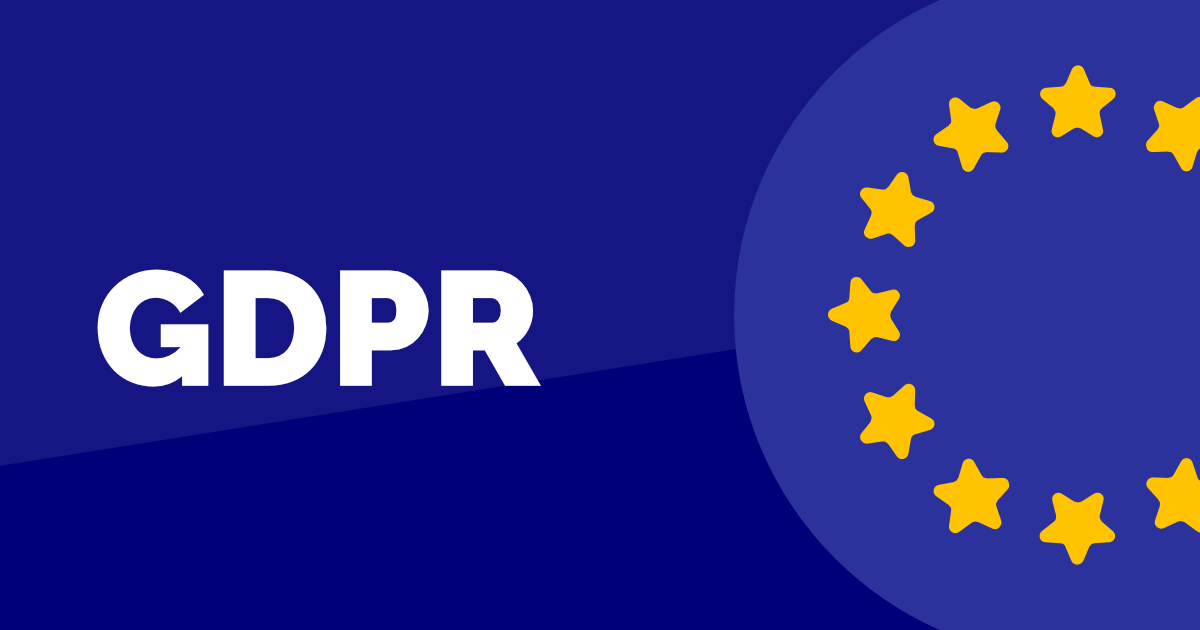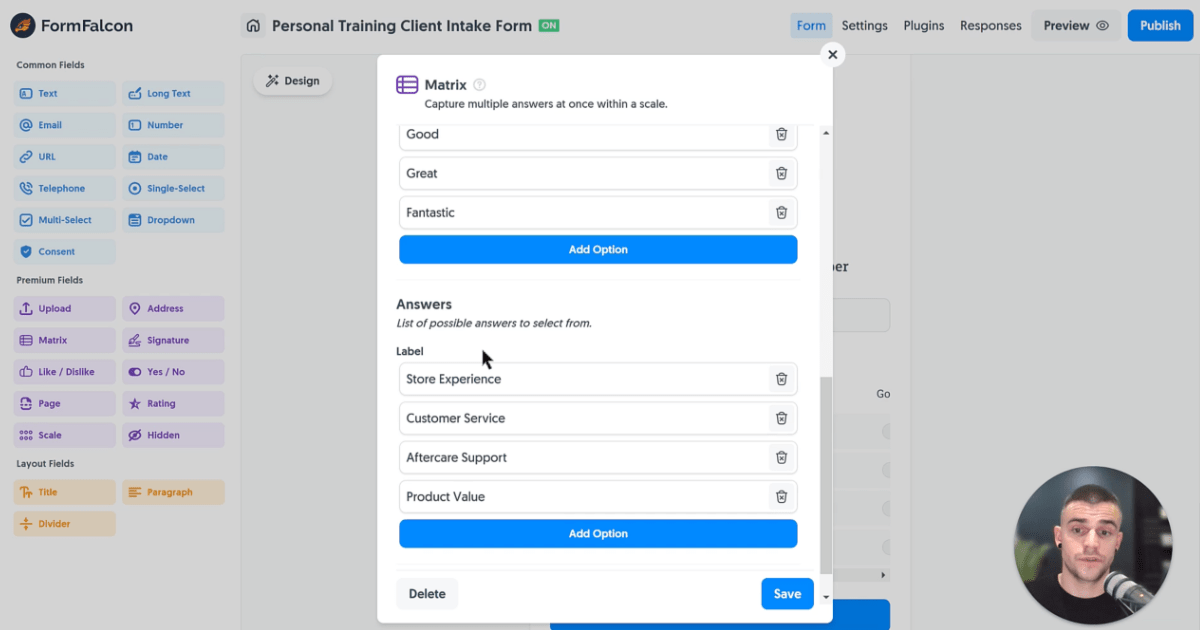Let’s talk GDPR and online forms.
Short for General Data Protection Regulation, GDPR arrived on planet earth in 2018 with the goal of enforcing protection of EU citizen “data”. Not just online data, but even paperwork data.
But we’re here to talk forms, and how you can follow the GDPR best practices for your business.
GDPR remains a confusion exercise for many businesses, with even those attempting to “comply” with it still getting it wrong.
When it comes to online forms, GDPR compliance becomes very important, so let’s explore the depths of what you need to do to ensure you’re ticking all the boxes.
GDPR applies to many levels of “data privacy”, and forms are the most likely first point of contact you’ll have with customers - so it’s important we get it right from the start.
GDPR-compliant forms are an absolute must. As a business you need to tick all the boxes to be GDPR compliant when creating forms (especially if your customers are based in the EU / UK).
We take compliance really seriously, and this guide will have you making GDPR-compliant forms in a minute or three.
What is GDPR?
GDPR is an EU law set out to protect EU citizen data. Upon the UK’s departure from the EU we now also have the UK GDPR to adhere to, they’re essentially the same principles to follow (thankfully).
GDPR applies to any business, big or small, that processes data of people living in the EU. Even if your business is not located in the EU, but you’re processing EU citizen data in any way, you’ll need to follow the rules.
GDPR Compliance and Forms
For those deciding to not comply, or doing it completely wrong yet trying, you might be exposing your business to a penalty fine of 4% of annual revenue or €20 million - and that’d be far from ideal.
With this in mind, GDPR doesn’t have to be a setback or annoyance, we can follow simple rules and blend in the essentials that we need to, to remain “compliant”.
Complying with GDPR makes you look professional, trustworthy and can actually benefit your business by showcasing your transparency towards data protection, processing and privacy laws.
✅ You’ll need a clear, crisp and comprehensive Privacy Policy that details to your users why their data is being collected, how you’re going to use it - and who will use it (and for how long).
Any forms you create that ask for data from EU citizens will need to include a link to your Privacy Policy, ticking the most important box in our quest for GDPR compliance.
The user of your form must be aware of how and why their personal details are being collected, where they’re stored, and how they’re processed. If you’re an open and honest business, your form users are going to love the effort you’ve put in to abiding by the essential privacy laws.
A commitment to data protection shouldn’t be an after thought that’s put in place to avoid legalities.
Key Principles
With the importance of GDPR behind us, it’s time to break down the “key principles” for you as best as possible to get you super GDPR-compliant.
Lawfulness, Fairness, and Transparency
📚 Personal data collection must be done lawfully, with bonus points available for being an open book and “transparent”. Simply tell your users why you’re asking for their data - then what your plan with it is.
- Always link to your Privacy Policy in your form so your users can click to learn more on why you need their data, how it’ll be processed and who will have access to it.
- If you’re proactive and do online marketing, you’ll need to add a checkbox to your form to gain consent - with supporting text such as: “I agree to the processing of my personal data in accordance with the Privacy Policy.". This checkbox must not be preselected for the user, they physically need to click it to proceed.
Purpose Limitation
📚 Only collect personal data that is necessary for the form’s main goal. When you collect their data, that data must not be used for any other purposes than what you told them it was for - or it’s a breach of GDPR.
- Only ask for relevant information in the form, for the purpose explained to the user (e.g., don’t ask for a phone number if email is sufficient).
- Your Privacy Policy, or form, simply needs to include a genuine reason for each piece of data you’re collecting (e.g., we use your email address to process your support ticket request, or for marketing outreach).
Data Minimization
📚 Minimalizm is key. Only ask for minimum amount of personal data you need to achieve the intended result, don’t be greedy and ask for unnecessary or excessive information.
- Create new forms with as few fields as possible, and review any existing forms that ask for too much. Ask for data that’s applicable (e.g., don’t ask for address details if they’re not required).
- Embrace optional form fields. Essential fields mark as “required”, non-essential fields can be left as “optional” - minimizing unnecessary data collection.
Accuracy
📚 Data needs to be accurate, and up-to-date. Poorly executed forms can allow for inaccurate data through lack of validation or security presence.
- Add validation to each form field to catch common errors early (e.g., ensuring emails or dates are in the correct format when entered).
- If data collected is for ongoing services and now part of your “system” after initial data collection via a form (e.g., subscriptions or accounts), provide users with an option to update their information in the future.
Storage Limitation
📚 Only store data for as long as it’s needed. Dispose of data collected in the past that’s not required today. If it’s fulfilled it’s duty, it’s time to let it go.
- Your Privacy Policy should explain how long their data will be stored, and what happens to it upon destruction.
- Clearly talk about data retention policies and ensure that any “expired data” is automatically deleted or anonymized (e.g., after an online account is closed).
Integrity and Confidentiality
📚 Confidential means confident. Your forms need to be secure and so does your database. Your form and database must be protected against unauthorized access, attacks and data loss.
- Pioneer industry-standard (and beyond) security practices. Encrypt data in transit and at rest, enforce SSL, use strong encryption keys and implement access controls.
- Store the data in EU-based data centers, ensuring it remains within the “jurisdiction” of GDPR.
- Keep security up-to-date. Perform regular audits on your security practices, keep software updated and minimize authorized access to data.
- Again, your Privacy Policy should detail on your how your users’ data is protected and the security steps you’ve put in place to keep it safe.
Create GDPR-Compliant Forms
EU data centers, easy-add consent fields, beautiful forms. Compliance made easy.
Learn MoreCreate incredible forms to run your business.




